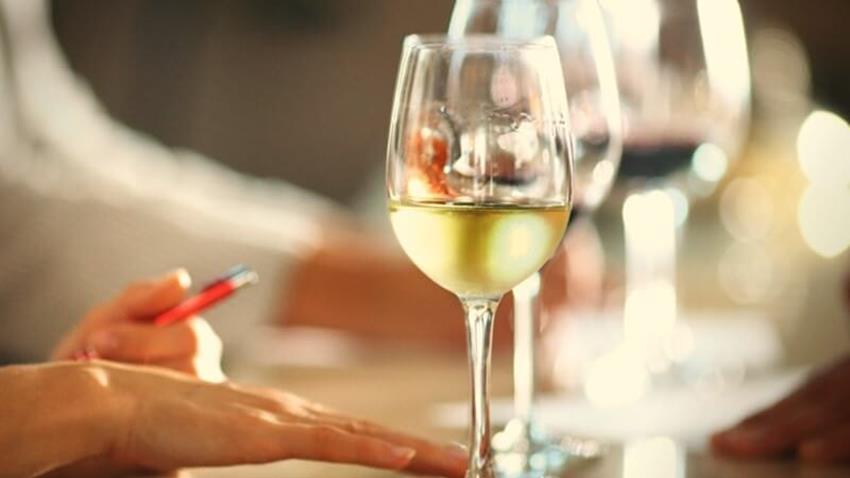
If you’re counting calories, you’ll know to flip the packet and check the figures on most items of food and drink. Nutritional information is, however, notoriously lacking on alcoholic drinks. Despite it being a legal requirement for almost all other products you’d find on a supermarket shelf.
In the European Parliament, members have debated adding nutritional facts to bottles. There are no plans yet however to make any changes, leaving a black hole in your diet plans. Nutritional information for wine isn't easy to find. The best available advice is a series of tips on which qualities to look out for when selecting a bottle.
Below we’ve selected five wines that should contain less than 140 calories for a 175ml glass. Accompanying each is a tip to help you make a lower calorie choice or suggestion to your customers. We would love to know what you think about the wines we’ve chosen, and whether you think adding nutritional information to packaging is a good idea. Let us know your thoughts in the comments!
Mas Rabell Blanco Catalunya, Torres

Torres is a family winery with extensive vineyards in the Denomination of Origin (DO) of Penedès. Mas Rabell is the name of a 45-hectare farm in the High Penedès from which Torres, the largest winery in Spain, source some of their best fruit. Made with 100% native Parellada grapes, this 11% ABV wine doesn't undergo any wood ageing. Packed with apple, pear and melon fruit flavours, the wine has a modern and refreshing style.
The 11% ABV gives us a clue to the number of calories in this wine. When choosing a wine with fewer calories, look for one with an ABV of 11% or less. Alcohol is second only to fat for levels of energy concentration and is the most important factor in the number of calories in a bottle of wine. It's even more important than sugar content, alcohol has around seven calories per gram while sugar has four.
Voga Italia Pinot Grigio delle Venezie

Voga Italia brings an Italian sensibility to their bottle design. It boasts some of the most intriguing looking packaging we’ve come across in the wine world. You could picture it in the fridge of a stylish bar. Inside the bottle you’ll find everything you expect of a good quality Italian Pinot Grigio. Dry and delicate with subtle citrus flavours and racy acidity.
Dry wines have fewer calories on average as they have lower levels of sugar present. The only point to remember is that you should stick to white wines. White wines usually have between 105 and 210 calories in a 175ml glass compared with between 135 and 280 for a red. Sparkling wines also make a good choice when the producer adds no, or very little, sugar. Examples include extra or ultra-brut Champagnes.
Quinta das Arcas Arca Nova Branco, Vinho Verde

A blend of mainly Loureiro and Arinto with a small amount of Trajadura grown in the cool climate of northern Portugal. The producer hand-picks the grapes and transports them to the winery quickly to preserve their full aromatic character. Fruity and fresh with a light-body, the wine shows green apple and a soft minerality. A dry and herbaceous white, on the finish there is a touch of spritz.
With this choice, we’ve looked to cool European wine regions. Think northern Portugal, Spain and France, along with Germany, Austria and England. Grapes grown here do not receive as much sunlight as those in Australia, Chile and South Africa. High levels of sunshine produce higher sugar content in the fruit and thus more alcohol. These areas all also fall under EU jurisdiction, at least for the time being. The EU has strict regulations regarding the alcoholic content of wines.
Muscadet de Sèvre et Maine Sur Lie, Château du Cléray

This wine is from one of the oldest estates in the heart of the Nantes vineyard region. Planted on clay and sandy soils over granite and schist bedrock, the vines here transport a minerality and a touch of richness to the liquid. On the nose, you'll find citrus and apple fruit, along with notes of lime blossom and mint. A delicious light white.
We've chosen this wine due to the grape used in its production. Grapes such as Muscadet, Pinot Grigio, Albariño, Torrontes and Piquepoul produce dry and light white wines. These wines will have fewer calories than the likes of Chardonnay, Sauvignon Blanc, and Viognier. Be sure to always check the ABV; you can often find higher ABV wines made using Albariño, Torrontes or Muscadet.
Torres Natureo Muscat

With just 33 calories in a 175 serve, this wine is the lowest calorie bottle in our range. It's often described as a beverage made from wine with the alcohol removed. It's certainly aimed at the health conscious.
Made in a conventional manner, the wine is then de-alcoholised using the ‘Spinning Cone’ technique. It has a pale lemon colour and shows floral aromas and flavours of green apple, peach and citrus. It's a bright and refreshing wine and meets the requirements of this list perfectly. But are we willing to give up the alcohol?

